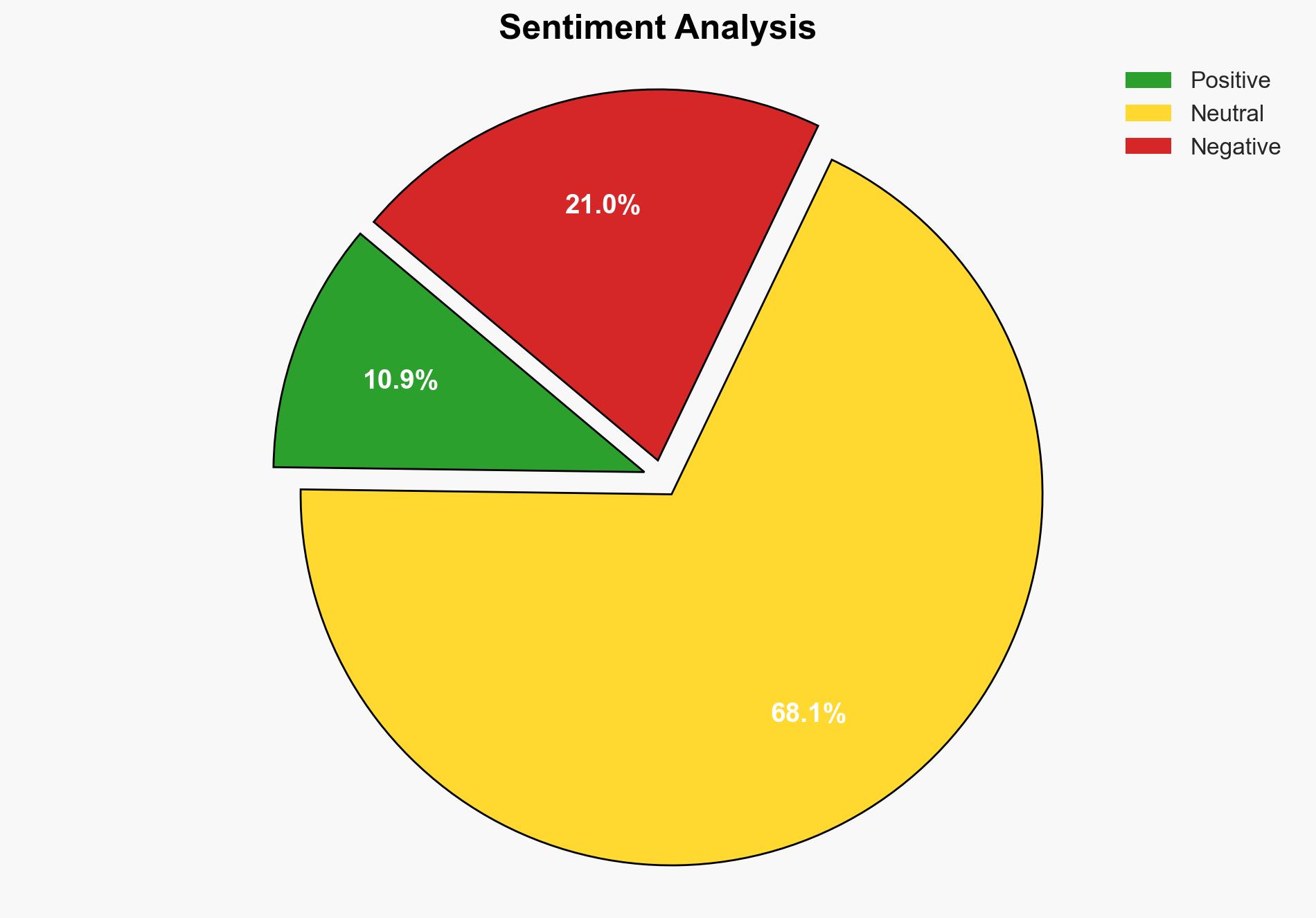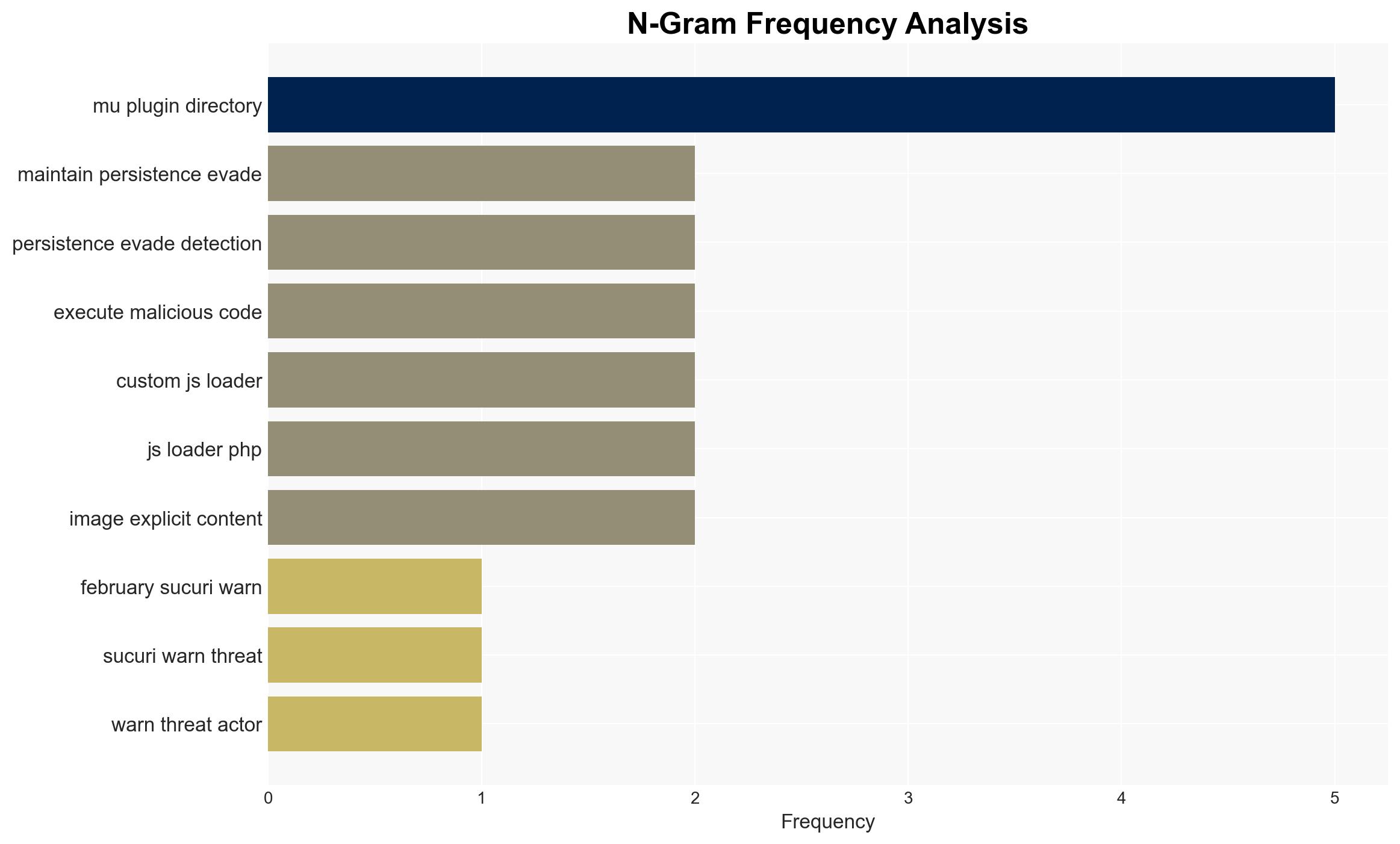Hiding WordPress malware in the mu-plugins directory to avoid detection – Securityaffairs.com
Published on: 2025-04-01
Intelligence Report: Hiding WordPress malware in the mu-plugins directory to avoid detection – Securityaffairs.com
1. BLUF (Bottom Line Up Front)
Recent findings indicate that threat actors are exploiting the WordPress mu-plugins directory to maintain persistence and evade detection. This method involves hiding malware in the directory, allowing automatic execution without standard activation, making it difficult to detect and remove. The implications for website security are significant, with potential for unauthorized access, data theft, and site manipulation.
2. Detailed Analysis
The following structured analytic techniques have been applied for this analysis:
General Analysis
Threat actors are leveraging the mu-plugins directory to hide backdoors and execute malicious code stealthily. The use of obfuscated PHP scripts and the manipulation of website behavior facilitate unauthorized redirections and data theft. This method of compromise includes fake updates, webshells, and spam injectors, which align with past findings of hidden backdoors in WordPress sites. The presence of unusual site behavior and unauthorized redirections are key indicators of such infections.
3. Implications and Strategic Risks
The exploitation of the mu-plugins directory poses significant risks to website integrity and user data security. This method can lead to severe security breaches, including unauthorized data access, persistent control over compromised sites, and manipulation of site traffic for malicious purposes. The potential for widespread impact on SEO rankings and site reputation is high, necessitating immediate attention from web administrators and security professionals.
4. Recommendations and Outlook
Recommendations:
- Implement robust security measures, including regular audits of the mu-plugins directory and monitoring for unusual site behavior.
- Enhance security protocols for plugin and theme updates, ensuring they are sourced from reputable providers.
- Strengthen admin credential security and employ multi-factor authentication to prevent unauthorized access.
- Encourage hosting providers to improve server security configurations and offer guidance on best practices.
Outlook:
In the best-case scenario, increased awareness and proactive security measures will mitigate the risks associated with this exploitation method. In the worst-case scenario, failure to address these vulnerabilities could lead to widespread site compromises and significant economic impacts. The most likely outcome involves a gradual improvement in security practices, driven by ongoing research and collaboration among cybersecurity experts.
5. Key Individuals and Entities
The report references Sucuri as a significant entity in identifying and analyzing the threat. The involvement of various unnamed threat actors highlights the need for vigilance and continued research in this domain.





